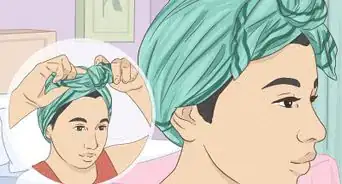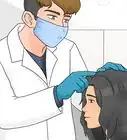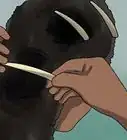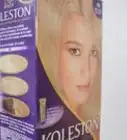This article was co-authored by Jenny Tran. Jenny Tran is a Hair Stylist and the Founder of JT Hair Lab by Jenny Tran based in the Dallas, Texas metro area. With over seven years of professional hair styling experience, Jenny specializes in hair coloring, haircutting, and hair extensions. JT Hair Lab is an authorized carrier of R+Co and of Milbon and is committed to using products with quality ingredients.
wikiHow marks an article as reader-approved once it receives enough positive feedback. This article has 18 testimonials from our readers, earning it our reader-approved status.
This article has been viewed 2,704,910 times.
Maintaining your hair is relatively easy once you know how to care for it. Hair is made of protein, so keeping a healthy diet and practicing good hygiene are essential parts of maintaining luscious locks. If you want beautiful hair, start by washing and conditioning it properly. Then, learn the healthy ways to dry and style your hair. Finally, make healthy lifestyle changes to support healthy hair.
Steps
Washing Your Hair
-
1Wash hair sparingly and use a good-quality shampoo. Washing hair too often can leave hair dried out, leached of its natural oils, and may damage your hair. Aim to shampoo your hair at most every other day or only twice a week.[1]
-
2Try shampoos that do not contain sulfates or parabens. Sulfates are the chemicals that make shampoos lather up.[2] Parabens are preservatives that cause irritation and eye problems after prolonged use[3] . Both of these chemicals aren't healthy for you or the environment so try to use shampoos with natural cleansers.
- Choose a shampoo that suits your hair type. Don't just go for any old shampoo; go for the shampoo that works for your hair type. Typical types include (but are not limited to):
- Curly or Afro-textured hair probably wants frizz-minimizing or softening shampoo that is creamy and has natural oils in it.
- Straight or oily hair probably wants a gentle shampoo designed for daily washing.
- Coloured or treated hair probably needs a shampoo that's fortified with extracts or amino acids, because treating your hair is essentially damaging it.
- Dry hair probably needs shampoos with glycerin and collagen to fix dryness and help restore some moisture into the hair.
Advertisement - Choose a shampoo that suits your hair type. Don't just go for any old shampoo; go for the shampoo that works for your hair type. Typical types include (but are not limited to):
-
3Be careful about using hair care products with too much protein. Too much protein can leave your hair feeling desiccated and brittle. While protein is the building block of healthy hair, use conditioners that come with balanced ingredients.
-
4Rinse your hair with apple cider vinegar once a month. Doing this helps to make your hair look shinier and cleaner; plus, it treats dandruff. Use 1 part apple cider vinegar to 3 parts warm water, then rinse and wash your hair as normal.
- Vinegar has a strong smell, but it will go away after you shampoo your hair.
Conditioning Your Locks
-
1Use conditioner that matches your hair type, length, and treatment damage. A good rule of thumb is to condition every time you shampoo your hair, although very processed or dyed hair probably needs a little more love than natural hair.
- Deep condition once a week. If you have afro-textured hair, use deep conditioner every time you wash your hair. Use a store-bought hair care product, or venture out on your own and try a homemade solution. Deep conditioning is very good for your hair. It keeps hair soft, healthy and moisturized. Wash it off your hair after 15-30 minutes.
-
2Condition your hair properly based on hair type:
- For fine hair: If you have very limp hair, try a botanical oil treatment before you shampoo. Use lavender or tea tree oil, for example, and work it under your cuticles before shampooing. Wash shampoo away and apply conditioner from the mid-shaft down to the end. Leave in for a minute before washing.
- For medium to thick hair, use a moisturizer with natural hydrators. Keep your conditioner light. Apply conditioner all over your head and let stay for 2-3 minutes. If your hair is afro-textured, you can keep it on for about 10-15 minutes before washing it off, or you can leave it in.
-
3Moisturize your hair. Use five oils: almond, castor, olive, coconut and lavender oils. Mix together equal proportions of each. Alternately, use egg oil. Apply to the hair and leave in for four hours prior to showering out. Repeat twice a week.
Drying Your Hair
-
1Comb out tangles using a wide-toothed comb before drying. Wet hair is fragile and easily breaks, so you should not brush it. Instead, spritz your hair with a leave-in conditioner and then detangle it with a wide-toothed comb. This will remove knots and smooth out your hair without risking damage.
- As an alternative, you can use your fingers.
- Start combing from your ends and work your way to your scalp. Don't try to pull your comb through the entire hair shaft until the ends are detangled.
- If your hair is afro-textured, make sure that your hair is damp and slippery with conditioner before detangling. Then, work in small sections.
-
2Use a T-shirt or microfiber towel instead of a regular towel to dry hair.[4] After you get out of the shower, wrap your hair in a cotton T-Shirt. Towels are made of fabric that is very rough and damaging to your hair, causing frizz and split ends. If you enjoy the convenience of a towel, try a microfiber towel, which is gentler on hair.
- You can even use a microfiber hair wrap, which doubles as a towel for your hair and a wrap to keep your hair out of the way while it dries.
-
3Let hair dry naturally when you can. Air drying your hair is the healthiest option. It may take awhile for your hair to completely dry, but your hair will be healthier in the long run.
- Try not to use a blow-dryer, if the style doesn't require it. Heat from hair dryers can cause damage to hair.[5]
- If you shower before you sleep overnight, put your hair up in a bun and let it air-dry overnight. Your hair should be dry in the morning. However, this may not work for hair that is very thick or very long.
-
4Blow dry your hair on the warm setting, for quick or sleek results. A hair dryer may be necessary if you are straightening your hair or need your hair dry quickly. If you need heat to style your hair, set the dryer on the warm setting, rather than hot. It will take longer for your hair to dry, but the warm setting is less damaging for your hair.
- Always spray your hair with a heat protectant product before you blow dry your hair. This helps prevent heat damage.
Styling Your Hair
-
1Don't brush your hair too much. Brushing your hair stimulates the follicles which promotes growth, but brushing too much too often, will cause damage to your hair strands that results in frizz and split ends.[6]
-
2Apply frizz control products for sleek hair, as needed. Frizz-control serum can be used in small quantities to tame frizzes. A little bit goes a long way, so start with a pea-sized amount. Add more as necessary, up to a dime-sized amount.
- Make sure you do not use too much, as this can dull your hair.
- Wash once a week with a a sulfate-free clarifying shampoo to avoid build-up, which will leave hair looking dull and flaky.
-
3Style your hair naturally, minimizing styling damage. Styling by itself won't overly damage your hair, but repeated stylings multiple times per week put some serious strain on hair.
- Avoid perming, crimping, straightening, curling, and bleaching or repeatedly coloring hair if at all possible. So you want to go out on Saturday night and need your hair straightened. That's fine. Just make it an occasional treat, not a permanent thing.
- Don't use rubber bands to pull back or otherwise style hair. Rubber bands will encourage your hair to get snagged, ripping it out of the follicle.
- Try not to use hairstyles that tightly pin or pull the hair back. Styles such as cornrows or tight ponytails can cause damage at the roots, or put stress on the follicles.
- Instead, experiment with up-dos: a simple ponytail or chignon looks clean and requires very few hair products. You could also just keep your hair down and wear a headband.
-
4Treat or dye your hair sparingly, if at all. Dyeing and treating your hair can take a lot out of it. People who opt for au naturel often don't experience the same problem with dry, damaged, or over-processed hair.
- If you do dye your hair, try it every once in a while. Take a break from dyeing and give your hair a little breather. It should respond favorably.
-
5Trim your hair regularly to get rid of split ends.[7] The best way to get rid of split ends is to do it yourself. Take some hair shears and attack the split ends about 1⁄4 inch (0.6 cm) above the splitting. Many women with perfect hair never have split ends because they make it a priority to get their hair trimmed, or trim it themselves, every 6-8 weeks.
Maintaining Your General Health
-
1Eat healthily. Give your hair the right amount of vitamins. Since hair is made of proteins, eat a balanced diet rich in lean protein, whole grains, fruits and vegetables. A healthy diet will ensure hair that looks and feels better.
- Give your hair some time to show new brilliance. What you eat will not have an immediate difference on the hair you already have, but it will help with hair that is newly growing.
-
2Stay hydrated. Drink at least 8 glasses of water or other fluids each day to keep your body hydrated. Additionally, you can enjoy foods like soups, fruits, and vegetables, which provide fluids. This helps keep your body -- and your hair -- healthy.
- Water is the best choice, but you can also keep hydrated with tea, juice, and other beverages.
- Drink more water if are active.
-
3Remove stress from your life. Physical and mental stressors will keep your hair from realizing its full potential. Stress can cause hair loss, so try not to let stress overcome you. This means finding healthy emotional outlets for your stress: yoga, biking, meditation, or other forms of exercise all work well.
What Ingredients Should I Avoid In Hair Products?
Expert Q&A
Did you know you can get expert answers for this article?
Unlock expert answers by supporting wikiHow
-
QuestionHow often should I wash my hair?
 Jenny TranJenny Tran is a Hair Stylist and the Founder of JT Hair Lab by Jenny Tran based in the Dallas, Texas metro area. With over seven years of professional hair styling experience, Jenny specializes in hair coloring, haircutting, and hair extensions. JT Hair Lab is an authorized carrier of R+Co and of Milbon and is committed to using products with quality ingredients.
Jenny TranJenny Tran is a Hair Stylist and the Founder of JT Hair Lab by Jenny Tran based in the Dallas, Texas metro area. With over seven years of professional hair styling experience, Jenny specializes in hair coloring, haircutting, and hair extensions. JT Hair Lab is an authorized carrier of R+Co and of Milbon and is committed to using products with quality ingredients.
Professional Hair Stylist
-
QuestionHow do I get rid of split ends without cutting my hair?
 Ashley AdamsAshley Adams is a Licensed Cosmetologist and Hair Stylist in Illinois. She completed her Cosmetology education at John Amico School of Hair Design in 2016.
Ashley AdamsAshley Adams is a Licensed Cosmetologist and Hair Stylist in Illinois. She completed her Cosmetology education at John Amico School of Hair Design in 2016.
Professional Hair Stylist
-
QuestionIf I have dry hair, can it make a difference overnight?
 Laura MartinLaura Martin is a Licensed Cosmetologist in Georgia. She has been a hair stylist since 2007 and a cosmetology teacher since 2013.
Laura MartinLaura Martin is a Licensed Cosmetologist in Georgia. She has been a hair stylist since 2007 and a cosmetology teacher since 2013.
Licensed Cosmetologist
Warnings
- Protect hairs from exposure to excessive sunlight and dust.⧼thumbs_response⧽
- Curlers and straightening irons can cause burns if you are not careful. Pay attention to what you're doing while you use them.⧼thumbs_response⧽
- Consult your doctor if you experience hair loss.⧼thumbs_response⧽
References
- ↑ Jenny Tran. Professional Hair Stylist. Expert Interview. 31 August 2020.
- ↑ http://cosmetics.specialchem.com/inci/sodium-laureth-sulfate
- ↑ http://www.dermnetnz.org/dermatitis/parabens-allergy.html
- ↑ Jenny Tran. Professional Hair Stylist. Expert Interview. 31 August 2020.
- ↑ Jenny Tran. Professional Hair Stylist. Expert Interview. 31 August 2020.
- ↑ http://www.cnn.com/2012/01/13/living/hair-myths-o/index.html
- ↑ Jenny Tran. Professional Hair Stylist. Expert Interview. 31 August 2020.
- http://www.mayoclinic.org/healthy-lifestyle/stress-management/expert-answers/stress-and-hair-loss/faq-20057820
- http://www.totalbeauty.com/content/gallery/7-habits-for-perfect-hair
About This Article
To take care of your hair, limit shampooing to every other day and follow up with a high-quality conditioner made for your hair type. Try to avoid hair products that contain damaging sulfates and parabens. Always detangle your hair with a wide-toothed comb and avoid brushing your hair too often, which can cause breakage. It's also a good idea to use heat styling tools sparingly and get your hair trimmed every 6-8 weeks to keep it looking its best. For more tips on safe hair styling, read on!


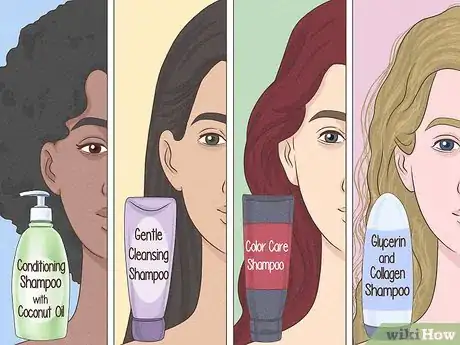
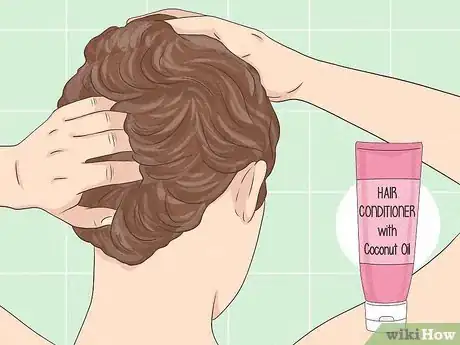
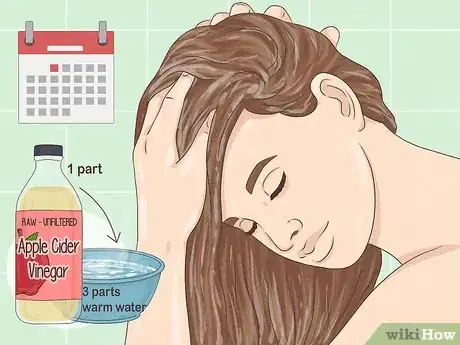

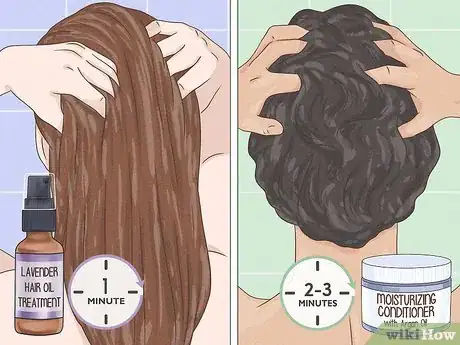

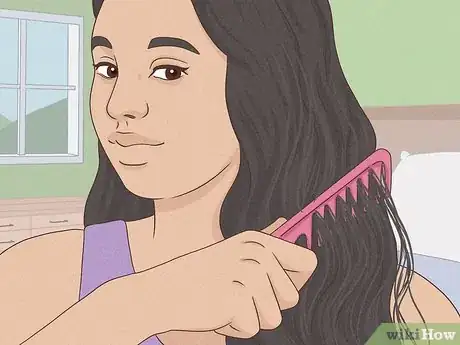
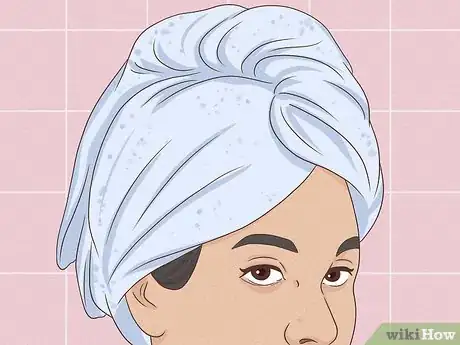
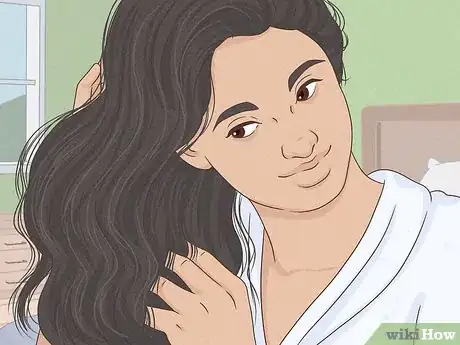
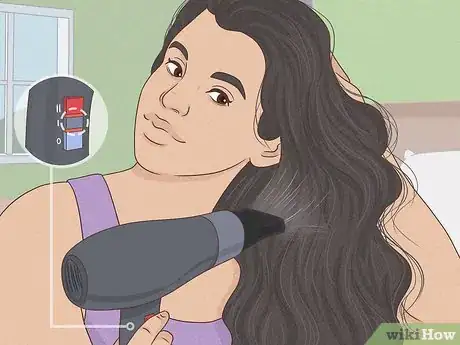
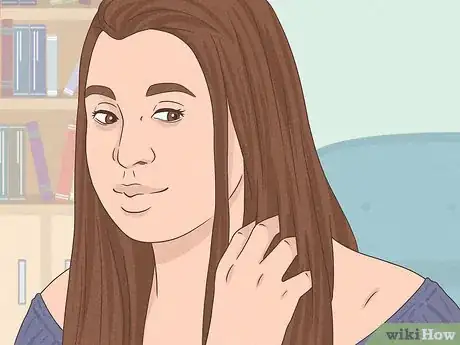
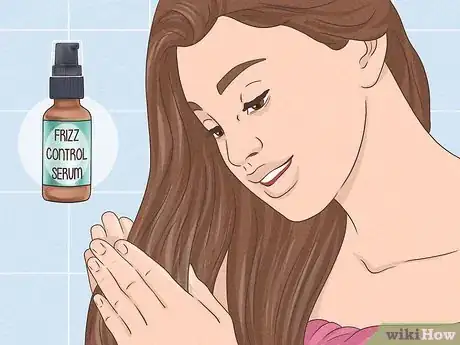
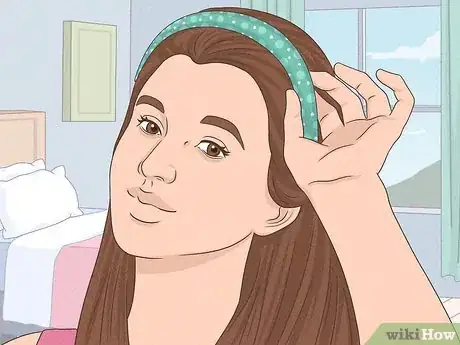
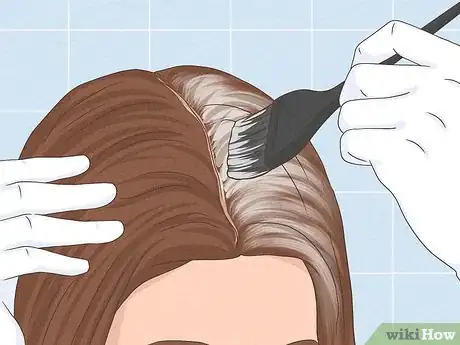
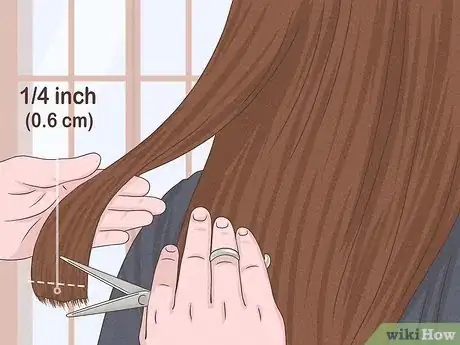
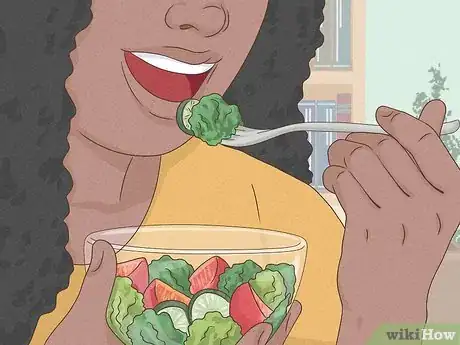
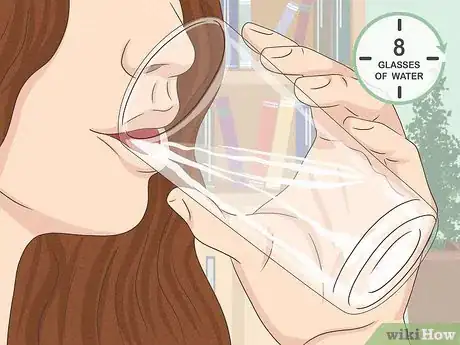
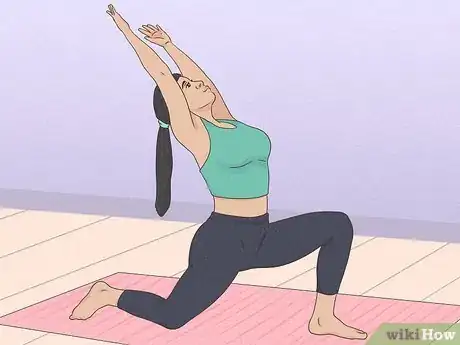
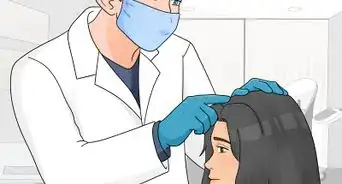

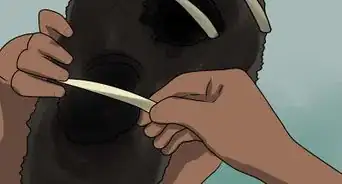
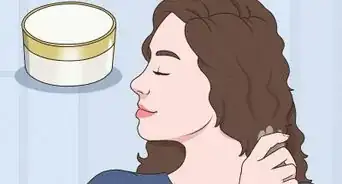
-Step-12.webp)
